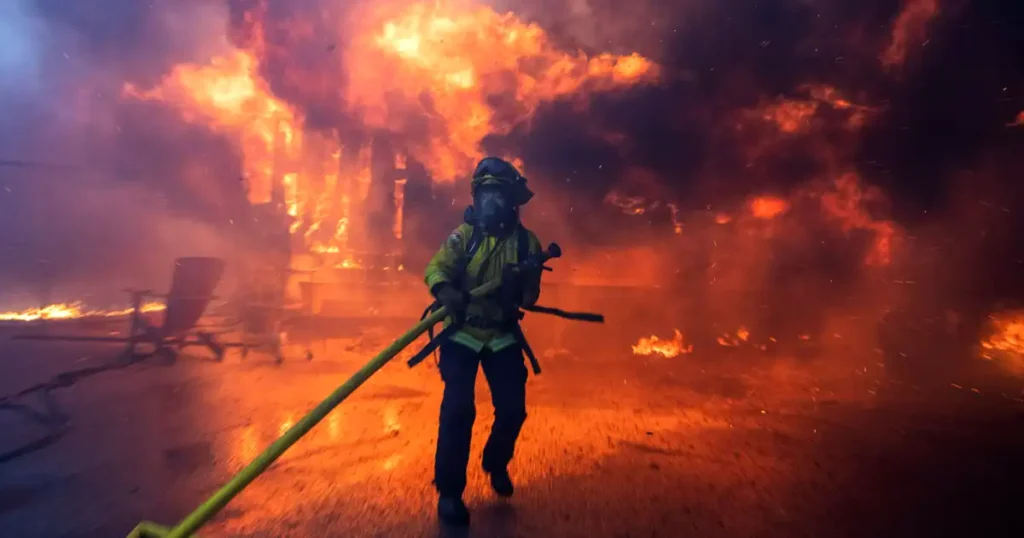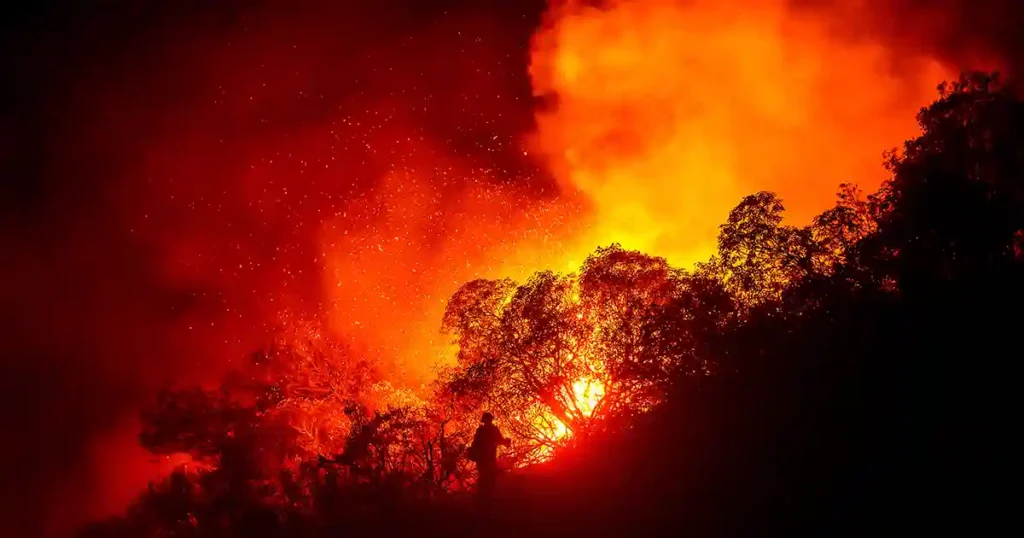Introduction
Southern California, renowned for its sunny beaches and mild climate, has recently faced a series of severe weather events that have tested the resilience of its residents and infrastructure. A combination of unprecedented winds, devastating wildfires, and anticipated heavy rainfall has created a volatile situation, prompting widespread evacuations and raising concerns about the region’s preparedness for such multifaceted natural disasters.

The Onset of Unprecedented Winds
On January 7, 2025, the National Weather Service issued warnings about an impending windstorm expected to be the most powerful in over a decade. Los Angeles and Ventura counties braced for gusts reaching up to 80 mph, with isolated areas, particularly in mountainous and foothill regions, anticipating gusts surpassing 100 mph. These conditions posed significant threats, including the potential for downed trees, structural damage, and heightened fire risk due to the desiccating effects on already parched vegetation.
The Ignition of the Hughes Fire
Amidst these formidable winds, the Hughes Fire erupted on January 14, 2025, near the community of Castaic, approximately 40 miles northwest of downtown Los Angeles. The fire’s rapid expansion was alarming, consuming over 5,000 acres within hours and prompting the evacuation of thousands of residents. By the afternoon, the blaze had nearly doubled in size, fueled by winds reaching up to 60 mph. The deployment of approximately 4,000 firefighters, along with aerial support, underscored the severity of the situation.
Evacuations and Community Impact
The swift progression of the Hughes Fire led to mandatory evacuations for over 31,000 residents, with an additional 26,000 placed on high alert. Communities in and around Castaic and Santa Clarita faced the immediate threat of encroaching flames, resulting in the closure of schools and major roadways. The potential evacuation of nearby facilities, including a local prison, added to the logistical challenges faced by emergency responders.
Firefighting Efforts and Challenges
Firefighters confronted arduous conditions as they battled the Hughes Fire. The combination of strong winds and dry vegetation created an environment conducive to rapid fire spread. Despite these obstacles, containment efforts progressed, with firefighters establishing perimeters to protect urban areas. The anticipated shift in weather patterns, including potential rainfall, offered a glimmer of hope for improved containment in the coming days.
Anticipated Rainfall: A Double-Edged Sword
Meteorologists forecasted rainfall over the weekend, which, while beneficial in aiding firefighting efforts, introduced new concerns. The recent burn scars left the landscape vulnerable to mudslides and debris flows, particularly in steep terrains. Residents in affected areas were advised to remain vigilant and prepare for possible secondary natural hazards resulting from the anticipated precipitation.
Historical Context and Future Implications
The convergence of extreme weather events in Southern California is not without precedent. The region has experienced cycles of drought, followed by intense rainfall, leading to a pattern of wildfires and subsequent landslides. However, the intensity and frequency of these events have raised questions about the influence of climate change and the need for adaptive strategies to mitigate future risks.
Community Resilience and Response
In the face of adversity, the resilience of Southern California communities has been evident. Local organizations mobilized to provide shelter and resources for evacuees, while neighbors offered support to one another during evacuations. The collective response highlighted the strength and solidarity of the affected populations.
Conclusion
The recent sequence of high winds, wildfires, and impending rainfall in Southern California underscores the complex interplay of natural forces impacting the region. As residents and authorities navigate the immediate challenges, there is a pressing need to reflect on long-term strategies to enhance resilience against such multifaceted threats. The experiences of January 2025 serve as a poignant reminder of the dynamic and sometimes perilous relationship between human settlements and the natural environment.






